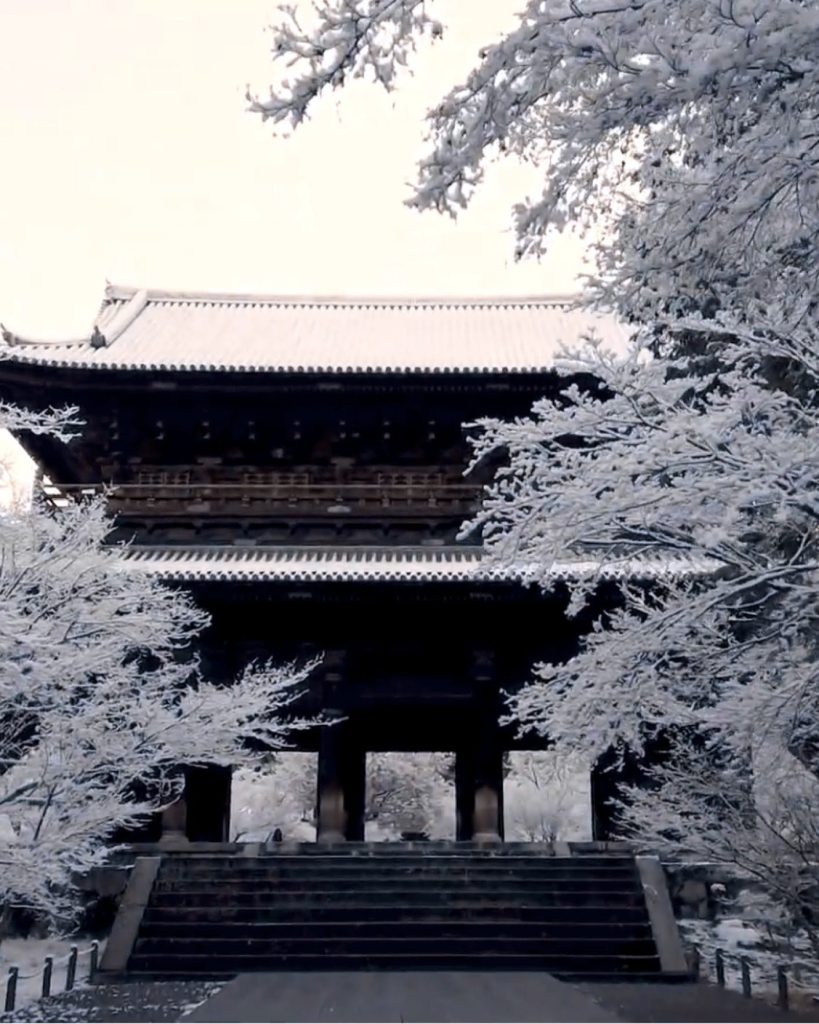
Due to heavy snowfall recently, Kyoto has turned completely white. One of Japan’s top three gates, the Sanmon of Nanzen-ji, is also covered in snow, creating a world reminiscent of an ink painting. While temple gates are commonly referred to as “山門 (Sanmon),” for large temples, they are often specifically called “三門 (Sanmon),” meaning the three gates of liberation. These gates symbolize the three stages of liberation: Ku (emptiness, not being attached to things), Muso (non-discrimination, not distinguishing based on appearances), and Musaku (non-attachment to desires). In essence, these gates represent the path that those seeking enlightenment pass through to approach the realm of the Buddha. Nanzen-ji is the first imperial-sanctioned Zen temple in Japan, holding a special status among the Kyoto Gozan and Kamakura Gozan, making it the most prestigious Zen temple in Japan. It is said to have been donated in 1628 by Todo Takatora to commemorate his vassals who died in the Osaka Summer Campaign. In kabuki, the actor Ishikawa Goemon is famous for striking a pose and exclaiming “What a magnificent view!” from this Sanmon. The temple grounds feature numerous historical buildings and gardens, including a water bridge reminiscent of a red-brick arch over the Lake Biwa Canal, adding a touch of charm to Nanzen-ji’s historical atmosphere. Visiting the renowned Yudofu restaurant ‘順生 (Junsei)’ is also one of the pleasures.
このところの大雪で京都中が真っ白になりました。日本三大三門の一つ、南禅寺三門も雪に覆われて、まるで水墨画の世界です。一般的にはお寺の門は山門と呼ばれますが、規模の大きな寺院の山門は三門と呼ぶところが多い様です。三門とは三解脱門の意味で、空解脱(物事にこだわらない)、無相解脱(見かけで差別しない)、無作解脱(欲望のまま求めない)の三境地を現しています。つまり、悟りを求める人たちが通る「仏さまに近づく門」という意味です。南禅寺は日本最初の勅願禅寺(時の天皇・上皇の発願により創建された禅寺)であり、京都五山および鎌倉五山の上に置かれる別格扱いの寺院で、日本の全ての禅寺の中で最も高い格式を持つ寺です。寛永5年(1628)、藤堂高虎が大坂夏の陣で戦死した家臣の菩提を弔うため寄進したと伝えられています。歌舞伎で、石川五右衛門がこの山門から「絶景かな、絶景かな」と見得を切ることで有名です。境内には数多くの歴史的建造物や庭園がありますが、琵琶湖疏水が流れる赤煉瓦のアーチを思わせる水道橋があったりで、南禅寺の古めかしさになじんで、今では一種の美を湛えているのも不思議な光景です。湯豆腐の銘店「順正」を訪ねるのも楽しみの一つです。
